By Pierce Salguero with Jason Lee
Wat Pho, officially Wat Phra Chetuphon, is a Thai temple complex situated in the central district of Bangkok (Matics 1979). The current facility was built in the early 1800s on the site of a monastery that had been active for centuries. The time of the reconstruction coincided with the move of the capital from Ayudhya to Bangkok after a crushing defeat at the hands of the Burmese army. With their old capital in ruins, all art destroyed, the libraries burned, and society in disarray, the new Bangkok dynasty rebuilt Wat Pho as a royal temple intended to initiate the reconstruction of Thai culture itself. Spanning roughly 20 acres, Wat Pho is separated into two main sections: the phutthawat in the north and the sangkhawat in the south. Whereas the monks’ residential quarters are located in the sangkhawat, the phutthawat contains its key architecture including the phra ubosot where Buddhist rituals are performed as well as the phra vihara where the world-famous 150-foot-long Reclining Buddha statue is housed. Also located in the phutthawat are sala rai or open pavilions, which include the medical pavilions where medical stone inscriptions are stored.
At that time, Wat Pho was designated a repository of Thai cultural heritage, and was opened to the public as a universal educational facility (Nivat 1933). All of the Thai arts and sciences were showcased and preserved within the temple walls. Various schools of Thai sculpture, bronze-casting, painting, and architecture were included, as was Thai knowledge about mathematics and astronomy. Among the sciences thus preserved was traditional Thai medicine. As virtually all of the important Thai medical texts were destroyed in Ayudhya, this project required bringing together medical experts from all over the land to share their expertise, and compiling a definitive version of the lost texts.
In the 1830s, the result of these conferences was the production of tablets that preserved medical knowledge in stone. These tablets were mounted in the medical pagoda where they can be seen today. Many tablets relate to Thai massage therapy, acupressure, and energy-line theory. Others list herbal recipes. These artifacts form the basis for all of the massage and herbal licensure programs in the country.
Additionally, a number of statues dating from the same period can be found in small gardens which depict rishis (Buddhist yogis). Of the 80 statues made, many have been destroyed, and only one remains depicting Thai massage. The remainder demonstrate a type of individually practiced yoga therapy known as ruesri dat ton, in which specific stretches and pressure points are shown for specific ailments (Griswold 1965).
Although it has become a tourist attraction, with its grand Buddha statues and ornate salas, Wat Pho remains an active center of Buddhist ritual and practice. The fact that this famous university of traditional Thai culture began on the grounds of the royal temple is indicative of the central role monasteries have played in the development of traditional Thai medicine. Historically, traditional Thai medicine was often practiced within the grounds of monasteries closely connected with temples.
Wat Pho today still houses a school of Thai massage and herbal medicine (this is a separate institution from the temple), and continues to serve as a spiritual hub for traditional Thai medicine. During the past few decades, the Wat Pho medical school has been at the forefront of a national effort to standardize and promote traditional Thai medicine as a viable alternative to Western hospital-based medicine. This revival project has succeeded in implementing a national licensure program that requires schools and massage clinics to be properly standardized and accredited. However, while this law has improved the quality of Thai medical facilities, it also has threatened the practices of the healers practicing local variations of traditional medicine which do not conform to the national curriculum (Salguero 2016).
Media
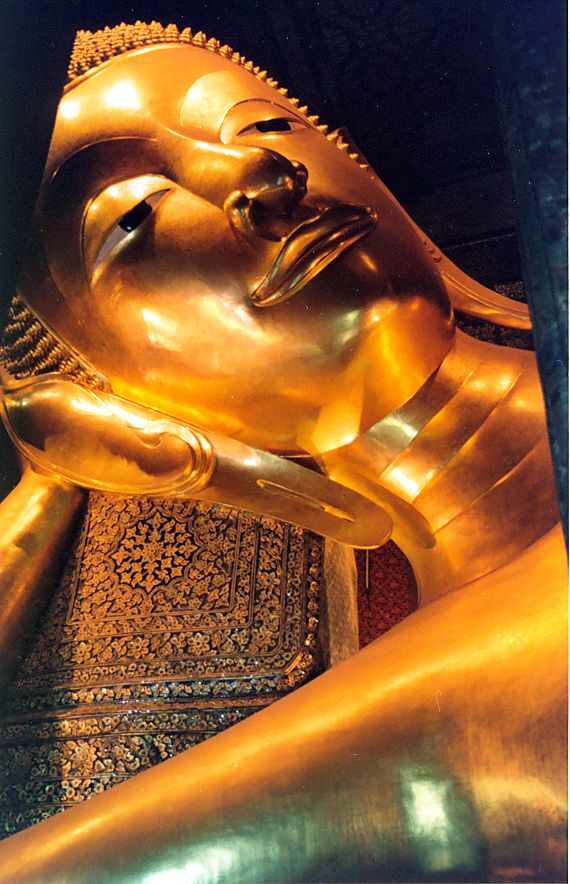
The famous “reclining Buddha” from Wat Pho. 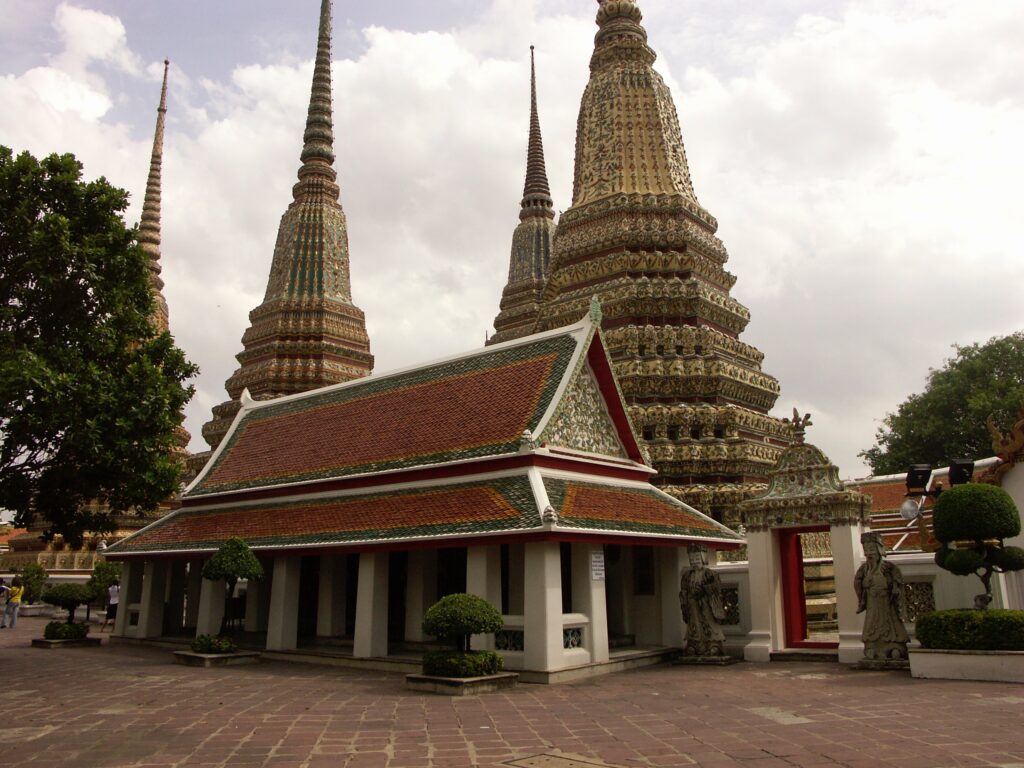
The medical pagoda on the grounds of Wat Pho. 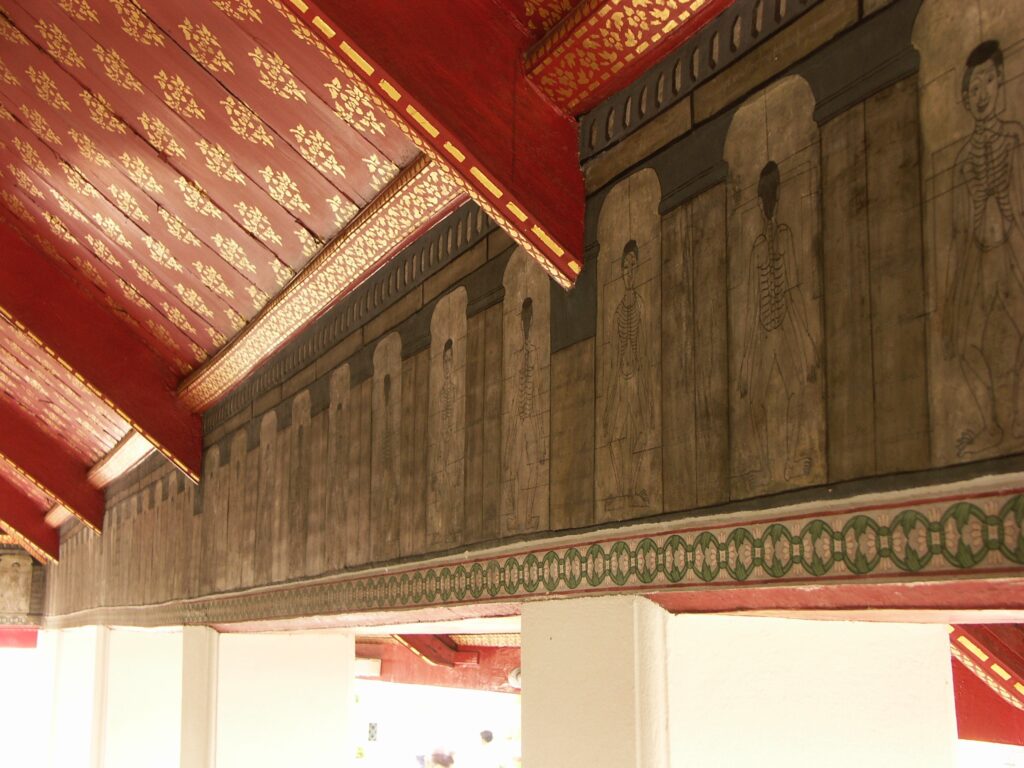
The massage tablets, lining the ceiling of Wat Pho’s medical pagoda. 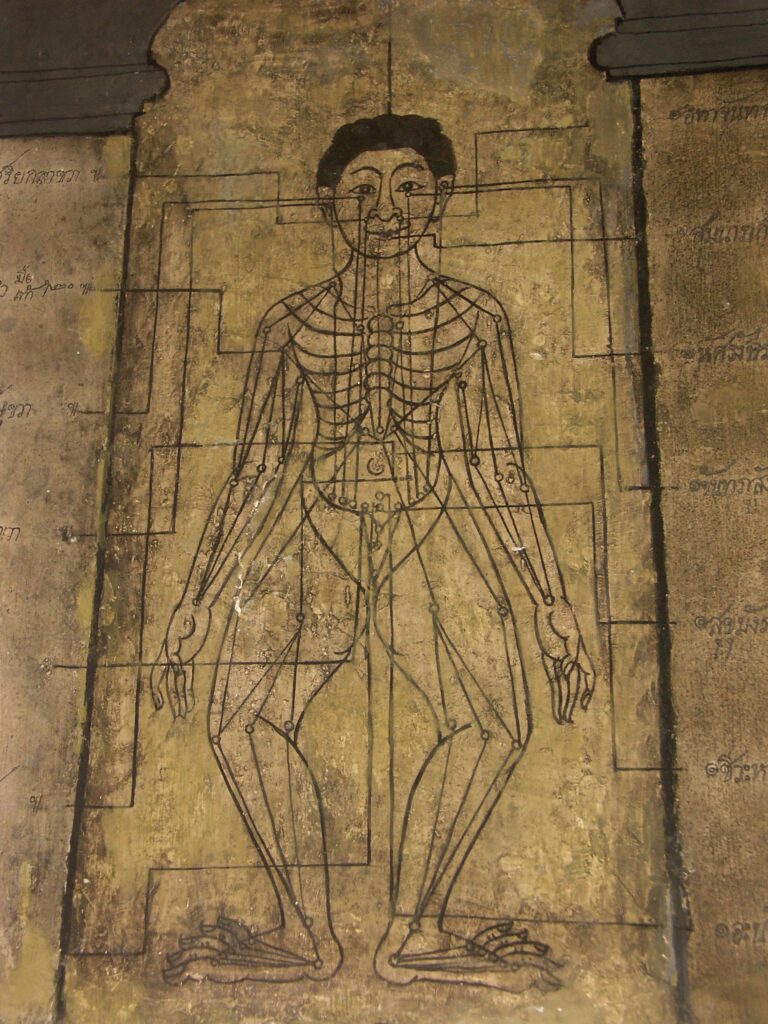
A tablet depicting sen (energy lines) and jap sen (acupressure points) for
treatment of diseases and disorders.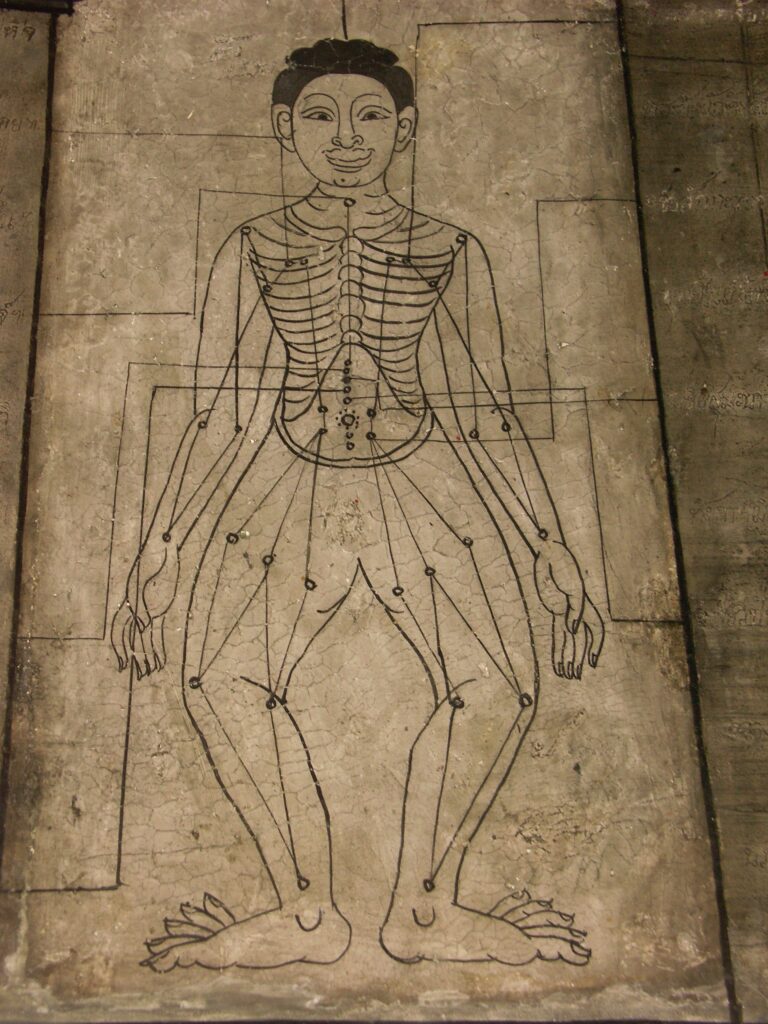
A tablet depicting sen (energy lines) and jap sen (acupressure points) for
treatment of diseases and disorders.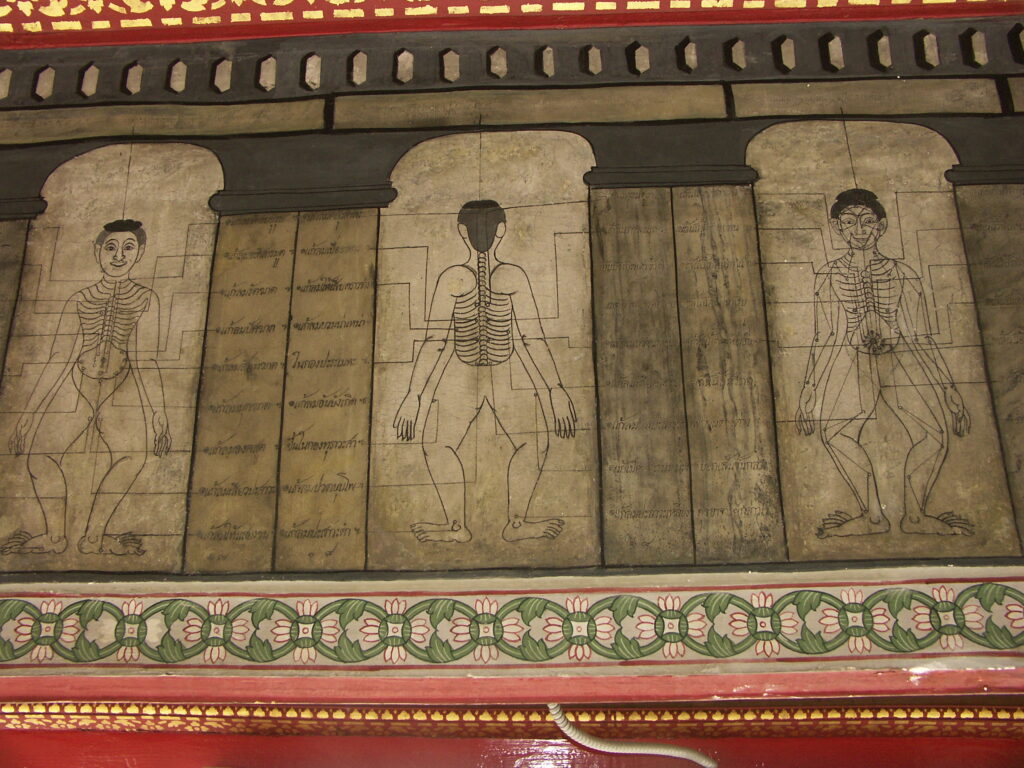
More tablets from the medical pagoda 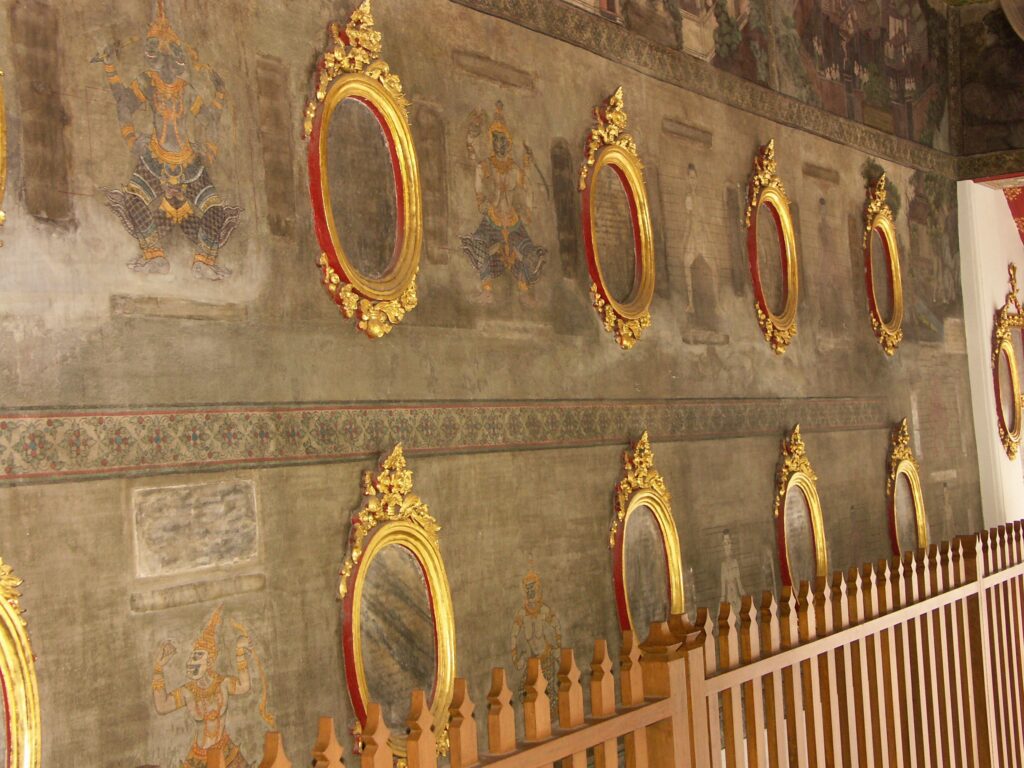
Marble tablets with herbal recipes are mounted in the medical pagoda. 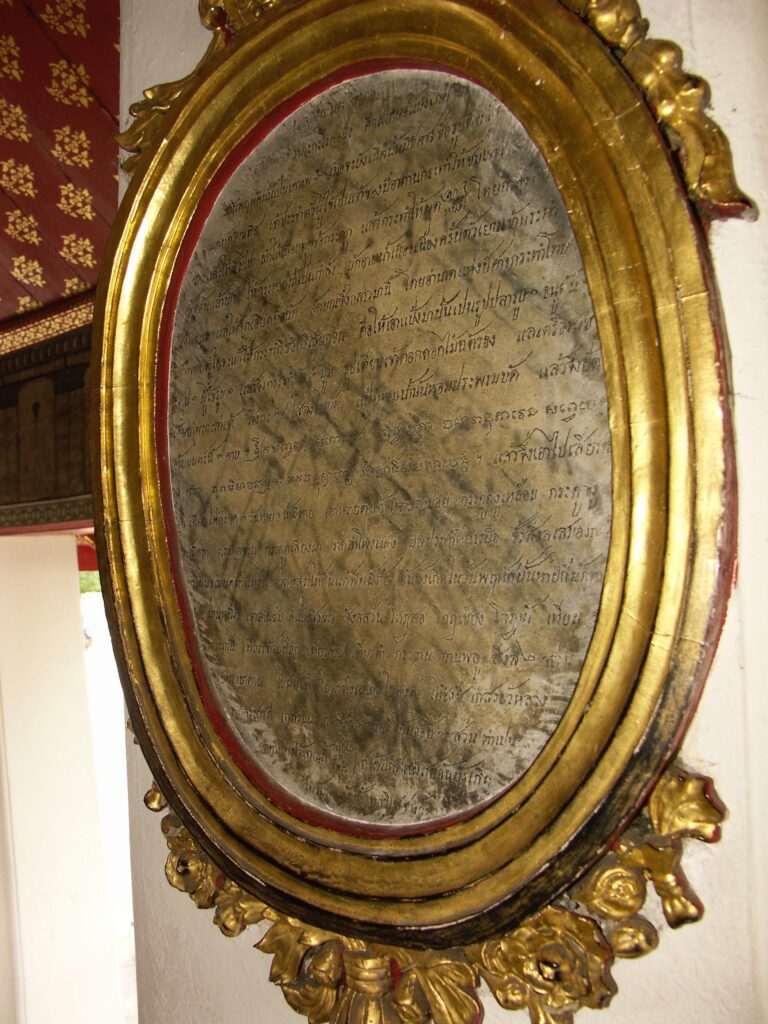
Marble tablets with herbal recipes are mounted in the medical pagoda. 
Statue of Jivaka, the Buddha’s doctor, giving a “wai” to the faithful at the Wat Pho temple in Bangkok. 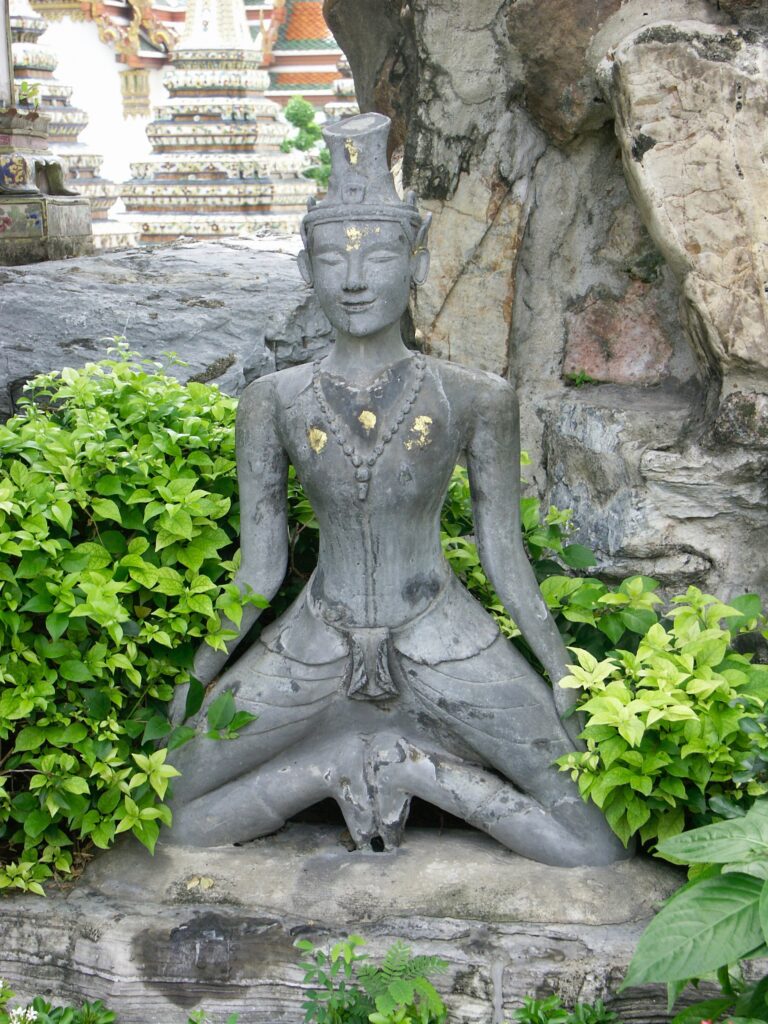
According to the inscription, this rishi shows a posture to relieve sciatica. 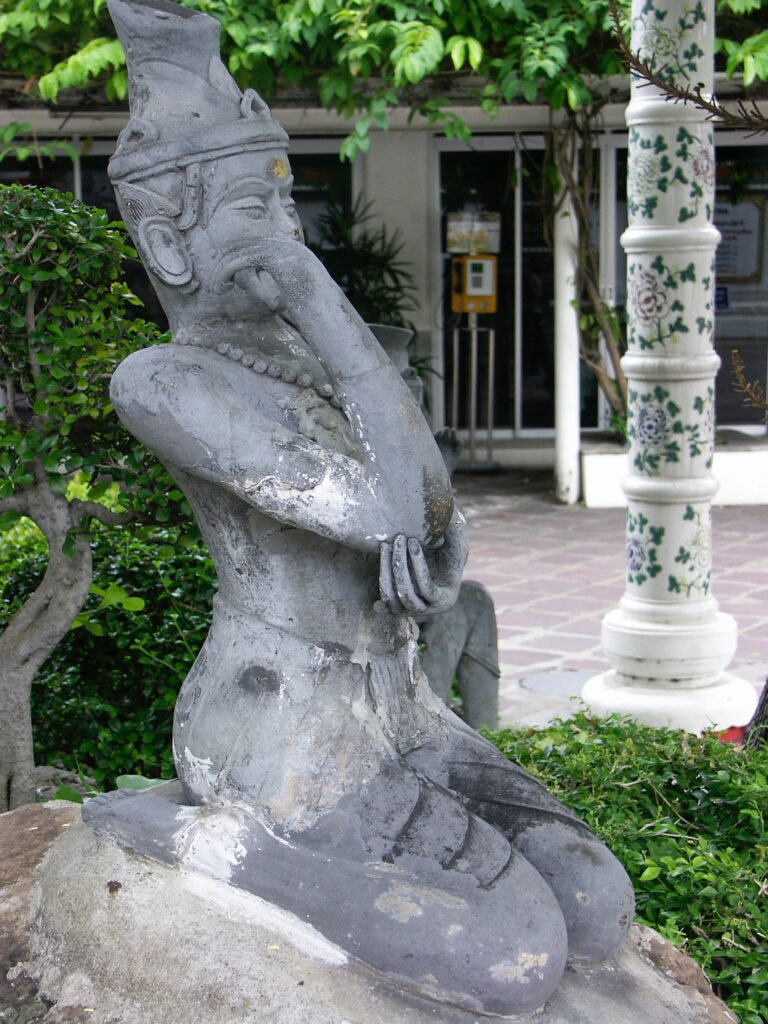
This is the rishi Vyadhipralaya, demonstrating a posture said to treat stiff hands and feet. 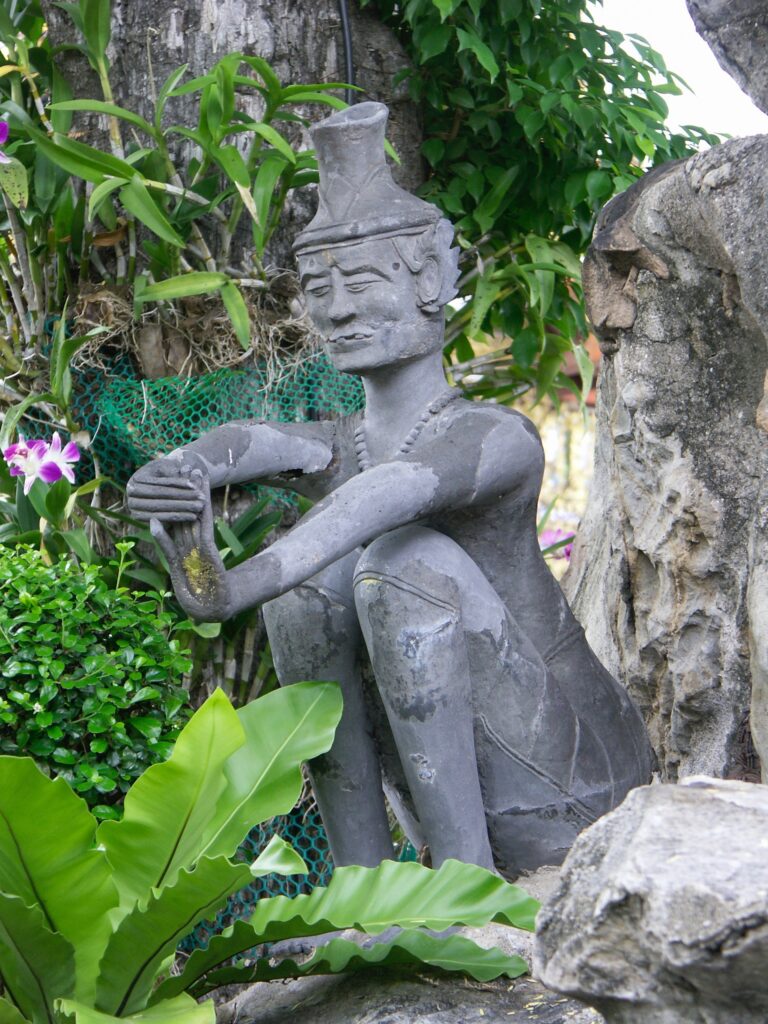
This posture is called the “Four Ascetics Blended Together,” a treatment for stiff arms. 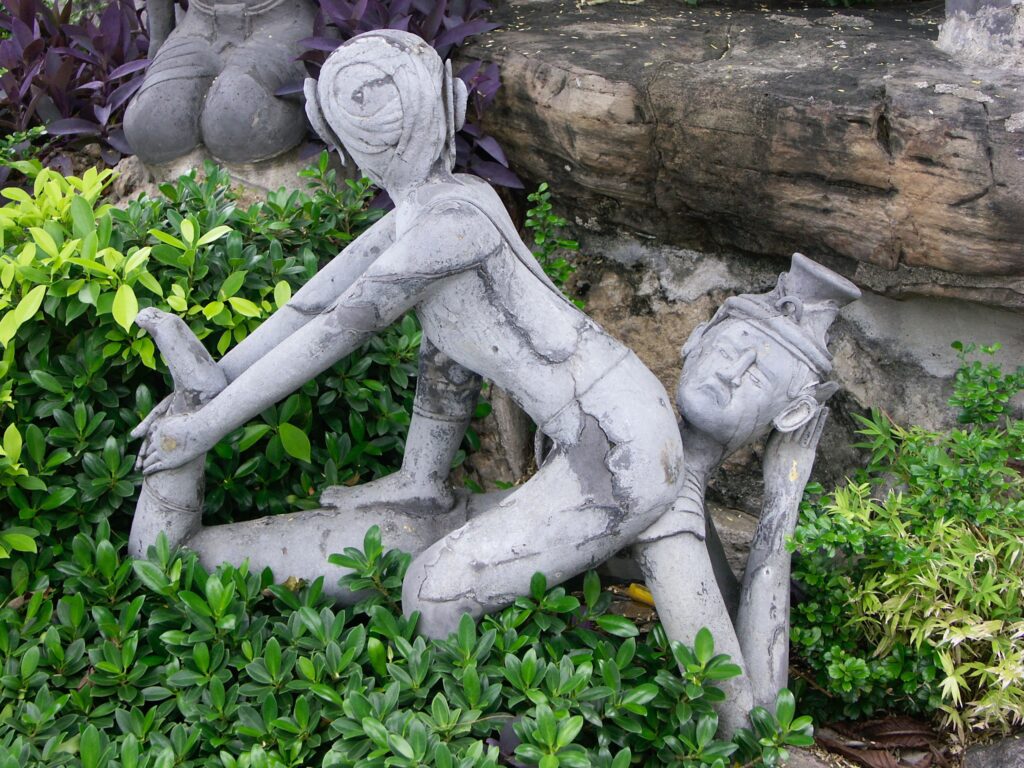
The last remaining statue at Wat Pho depicting massage. The accompanying inscription says this is a cure for testicular hydrocephaly. 
Herbal stalls sell remedies outside the temple.
Google Street Views
Scholarly Sources
- Griswold, A. B. 1965. “The Rishis of Wat Po.” In Felicitation Volumes of Southeast-Asian Studies Presented to His Highness Prince Dhaninivat Kromamun Bidyalabh Brindhyakorn. Bangkok: The Siam Society.
- Matics, K.I. 1979. A History of Wat Phra Chetuphon and its Buddha Images. Bangkok: Siam Society.
- Nivat, H.H. Prince Dhani. 1933. “The Inscriptions of Wat Phra Jetubon.” Journal of the Siam Society 26 (2): 143-170.
- Salguero, C. Pierce. 2016. Traditional Thai Medicine: Buddhism, Animism, Yoga, Ayurveda, Revised edition. Bangkok: White Lotus Press.
External Links
- Wat Phra Chetuphon Wimon Mangkhalaram Rajwaramahawihan. Wat Pho, 2018. http://www.watpho.com/en/home#Page2
Credits
This text was copied from Salguero, C. Pierce. 2006. Spiritual Healing of Traditional Thailand. Forres: Findhorn Press with edits.
